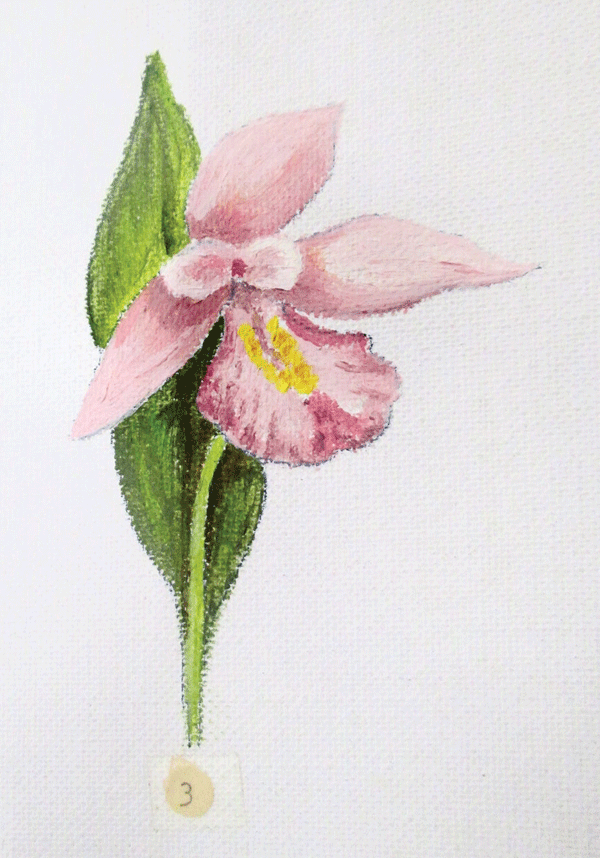News & Articles
Browse all content by date.

Sometimes when the wind howls, snow swirls, and ice coats the roadways, it’s safer to experience nature from the comforts of your home. One of the ways you can do that is through the Museum’s Virtual Exhibit.
For the past three years, a group of Museum staff and volunteers have been doing the tedious but important work of cataloging most of our collection of museum specimens in a digital database called Past Perfect. Whereas each bear mount, bird study skin, pressed plant, and insect in a vial used to have just a number and some papers in a file folder, each specimen now has a photo and digital record. These records are available to the public through our website at: cablemuseum.org/virtual-exhibit. This project is part of a Museums for America Grant from the Institute for Museum and Library Services.
While it’s fun to browse through the photos of taxidermied mammals and check out our collection of fish, my favorite part of the Virtual Exhibit is that you can view many of our most fragile and delicate collections that may never go on display inside the actual Museum.
For example, our collection contains a slide show on spring wildflowers put together by Lois Nestel herself. Lois was a self-taught naturalist and the Museum’s first director. As legend tells it, the idea for the Cable Natural History Museum was born when Mrs. Mary Griggs Burke, a local philanthropist, attended Lois’s wildflower slide talk and determined that this incredible naturalist needed her own Museum. The generous funding and lofty ideals that Mrs. Burke used to jumpstart the Museum continue to inspire us today. Reflecting back on her experiences, Mrs. Burke wrote, “I am glad more people are enjoying the beauty of nature—but only if people value the land and treat it with respect can they preserve what they enjoy”
Lois’s legacy lives on in many other specimens, too. Her watercolor paintings of flowers, mushrooms, and birds are delightfully beautiful and technically accurate. These, too, can be viewed through our Virtual Exhibit portal.
Besides looking through classic groups of collections like mammals, birds, fish, reptiles, and even mussels, you also can view virtual exhibits based on our recent Museum exhibits--“Nature’s Superheroes,” and “Lakes Alive!” What’s fun about these online exhibits is that they pair photos of the specimens used in the physical exhibits with information taken directly from the text panels. If you’re forgotten the fun facts you learned while visiting the Museum, or if you weren’t able visit our previous exhibit, you can explore them online instead.
Having 2,270 items from our Museum collections available in a searchable online database isn’t just for self-edification on a snowy day, though. It serves some higher purposes as well. For one, our Naturalist/Curator, Elsa Hansen, now can access all of our records from the ease of a computer interface instead of dusty old files. This is a huge improvement and a major accomplishment for our little Museum. Organizing and completing our collections database was one hurdle on our way to becoming accredited with the American Alliance of Museums (AAM). We hope to execute the rest of the process this spring.
Why is taking care of our collections so important, anyway? Museum collections play a vital role in scientific research on biodiversity, evolution, population genetics, and even things like climate change and pesticide use. When peregrine falcons began to decline, it was museum specimens of eggshells that allowed researchers to confirm that DDT was the culprit and get it banned.
While many of our collections were acquired before DNA testing was an option, scientists now can go back and sample old specimens to get new information. Using DNA, they can discover how populations have changed over time, and sometimes even discover new species! In order for our collections to be useful to scientists, though, they have to be well taken care of and well documented.
Whether your purpose is scientific research or satisfying curiosity, museum collections are vital in today’s changing world. We invite you to explore ours from the comfort of your own home.
The Cable Natural History Museum’s Virtual Exhibit can be viewed at: cablemuseum.org/virtual-exhibit.
For over 45 years, the Cable Natural History Museum has served to connect you to the Northwoods. Come visit us in Cable, WI! Our new exhibit: “Lake Alive!” opened May 1, 2015, and will remain open until March 2016.
Find us on the web at www.cablemuseum.org to learn more about our exhibits and programs. Discover us on Facebook, or at our blogspot, http://cablemuseumnaturalconnections.blogspot.com.
| Tweet |


